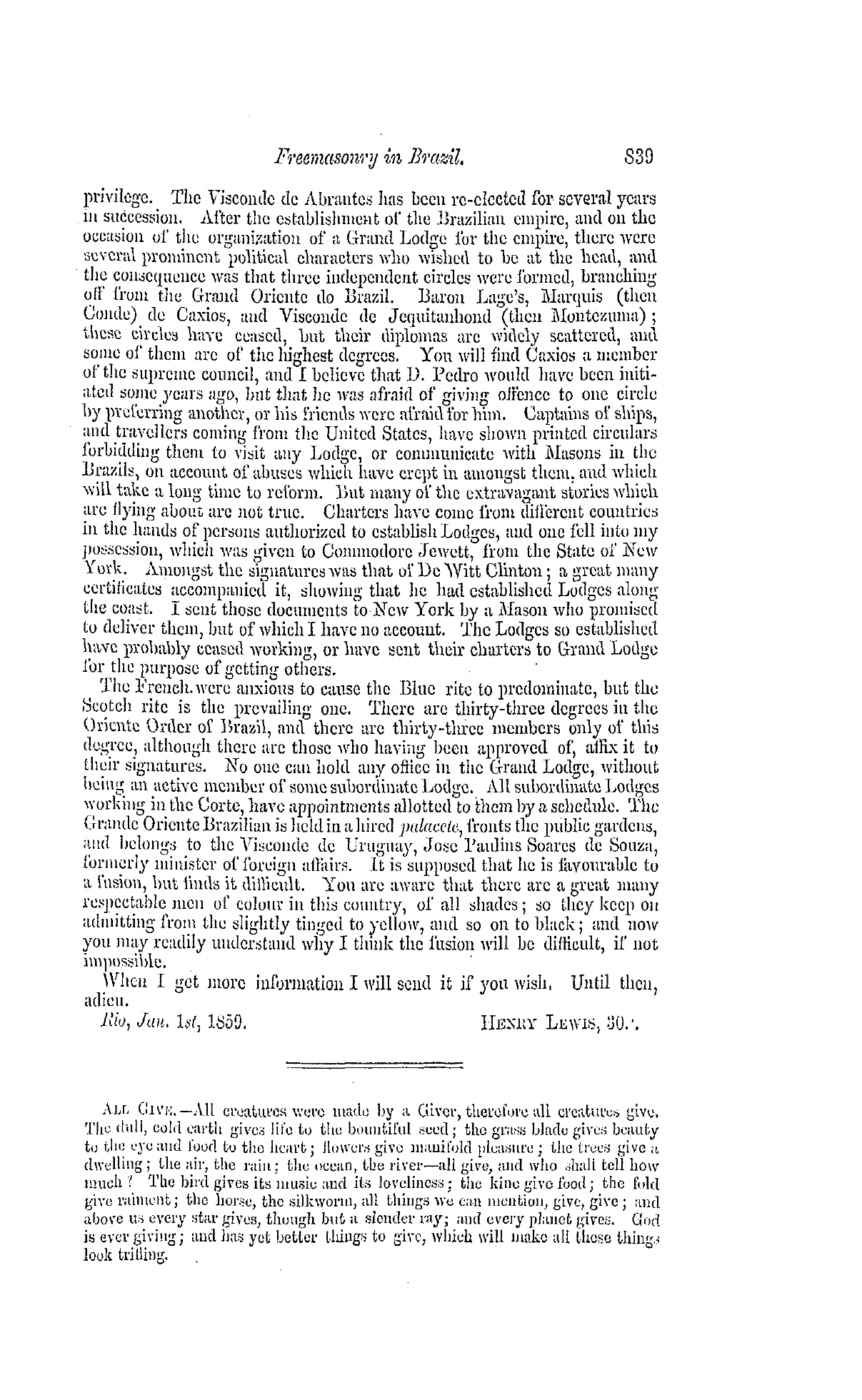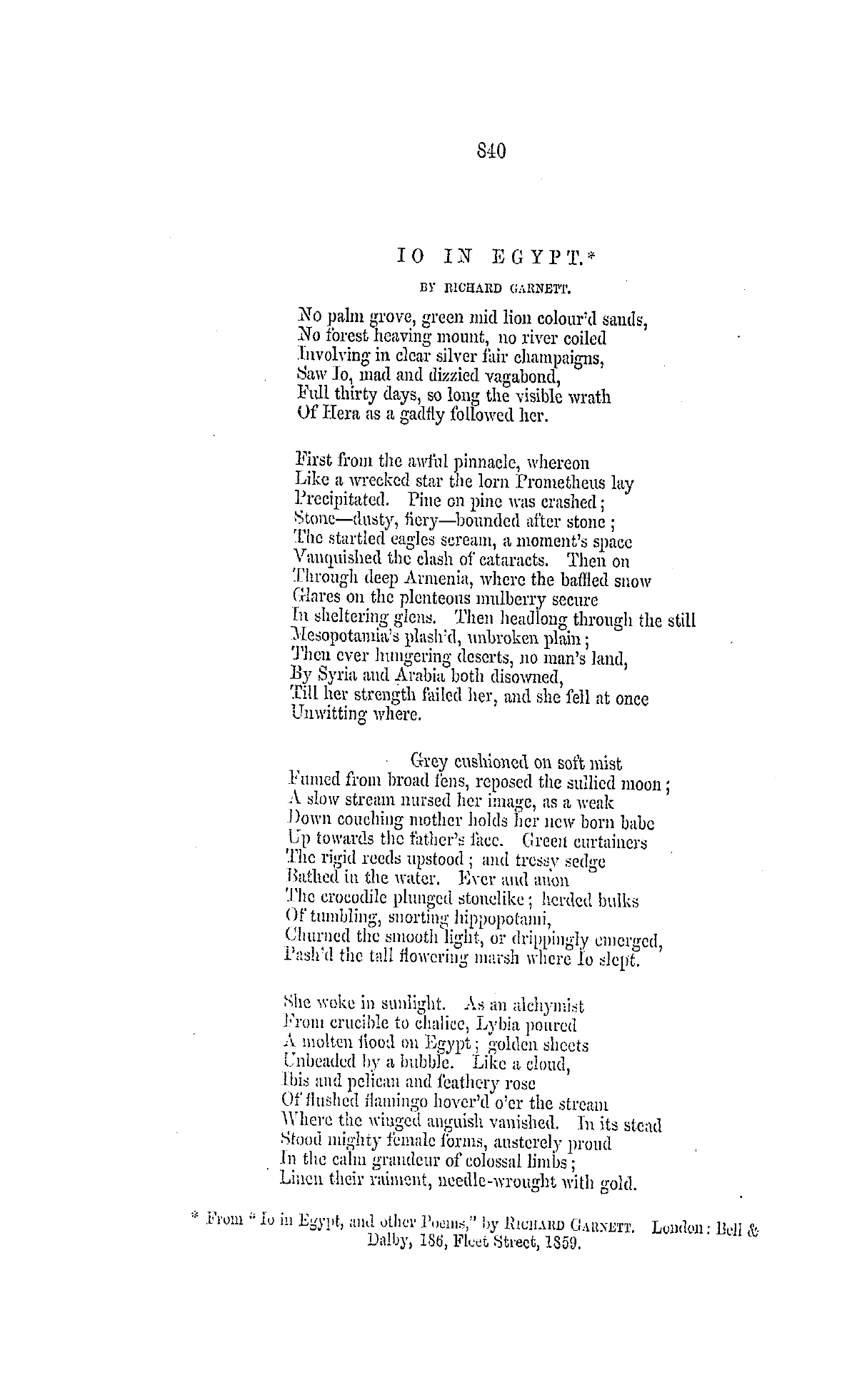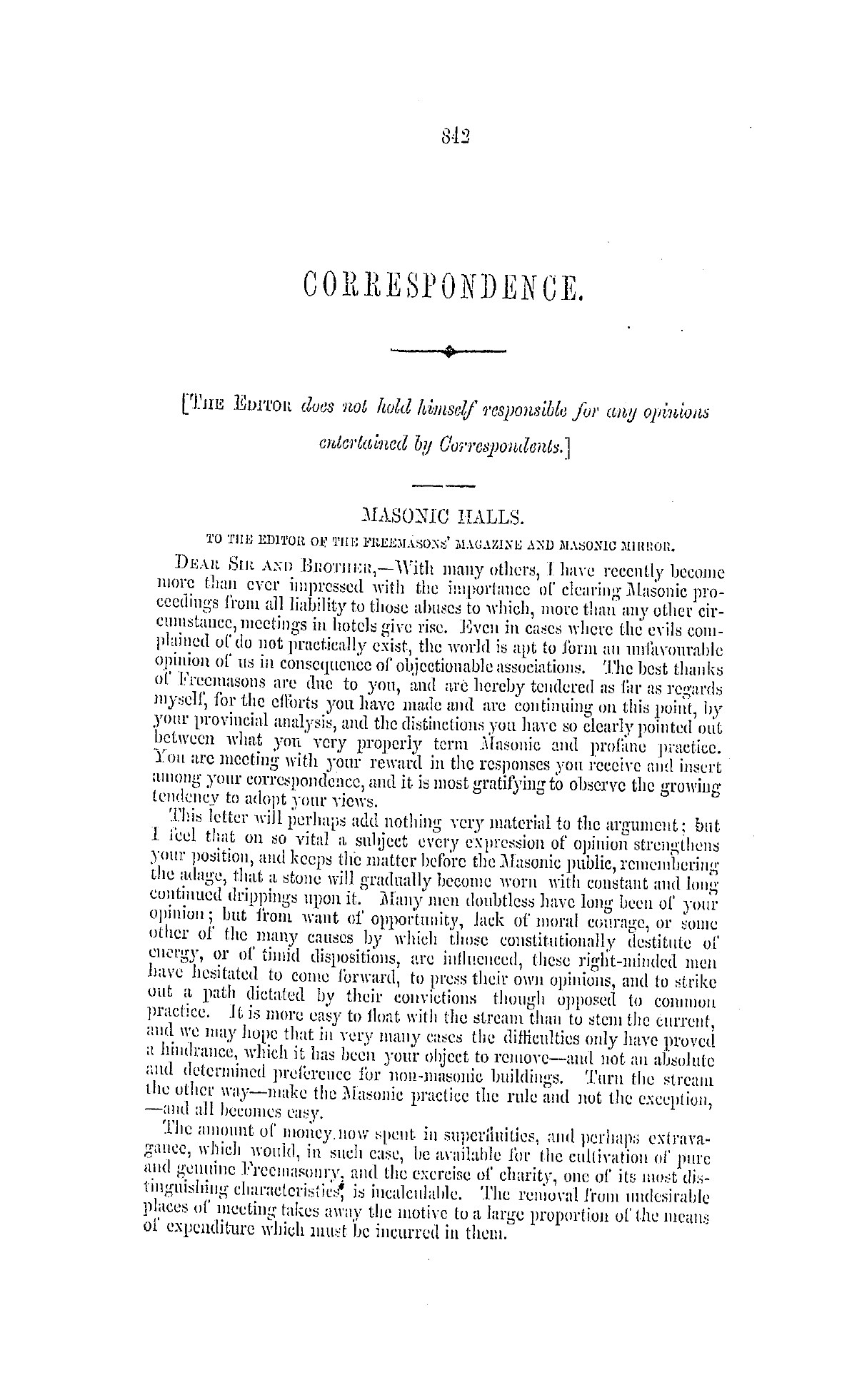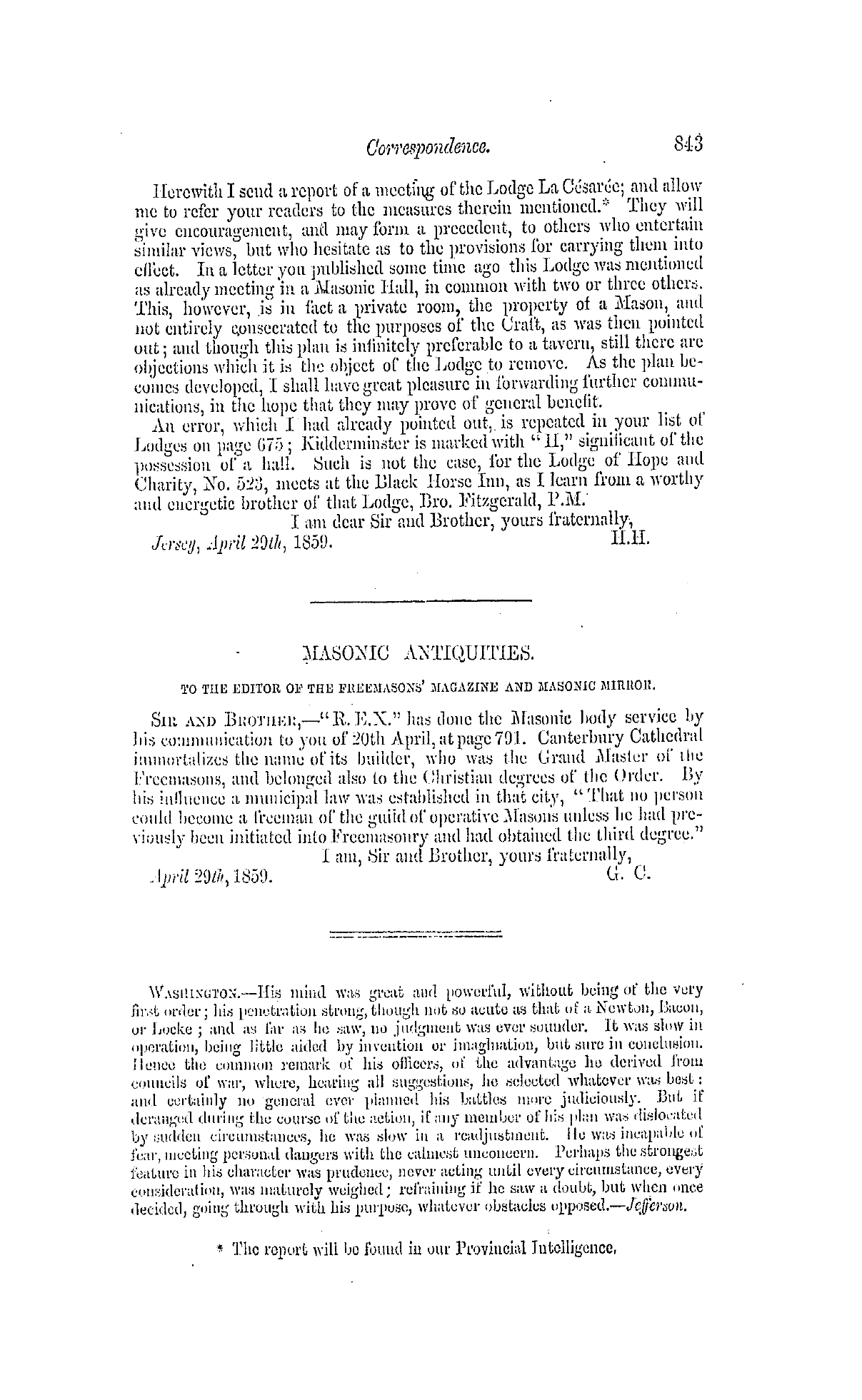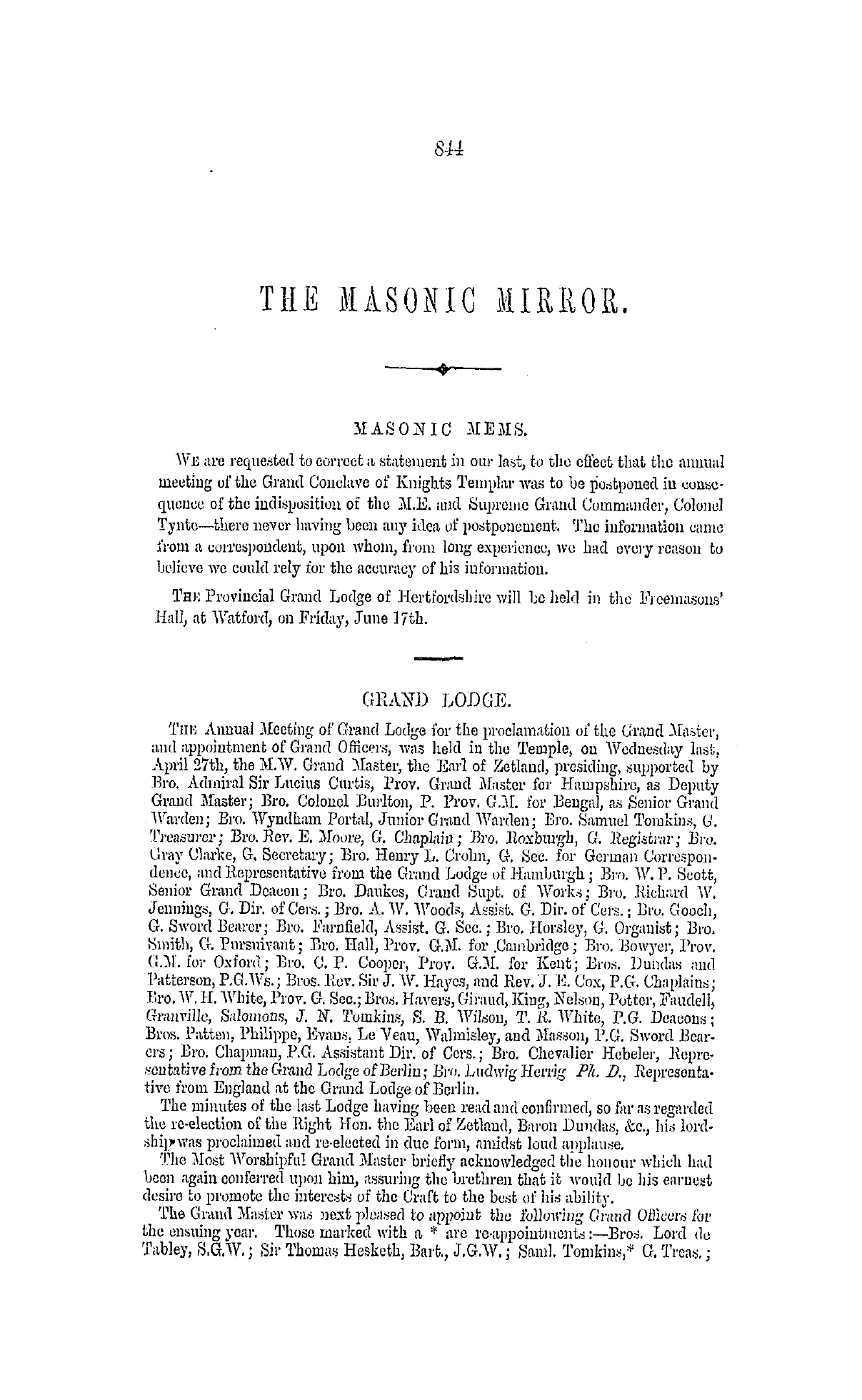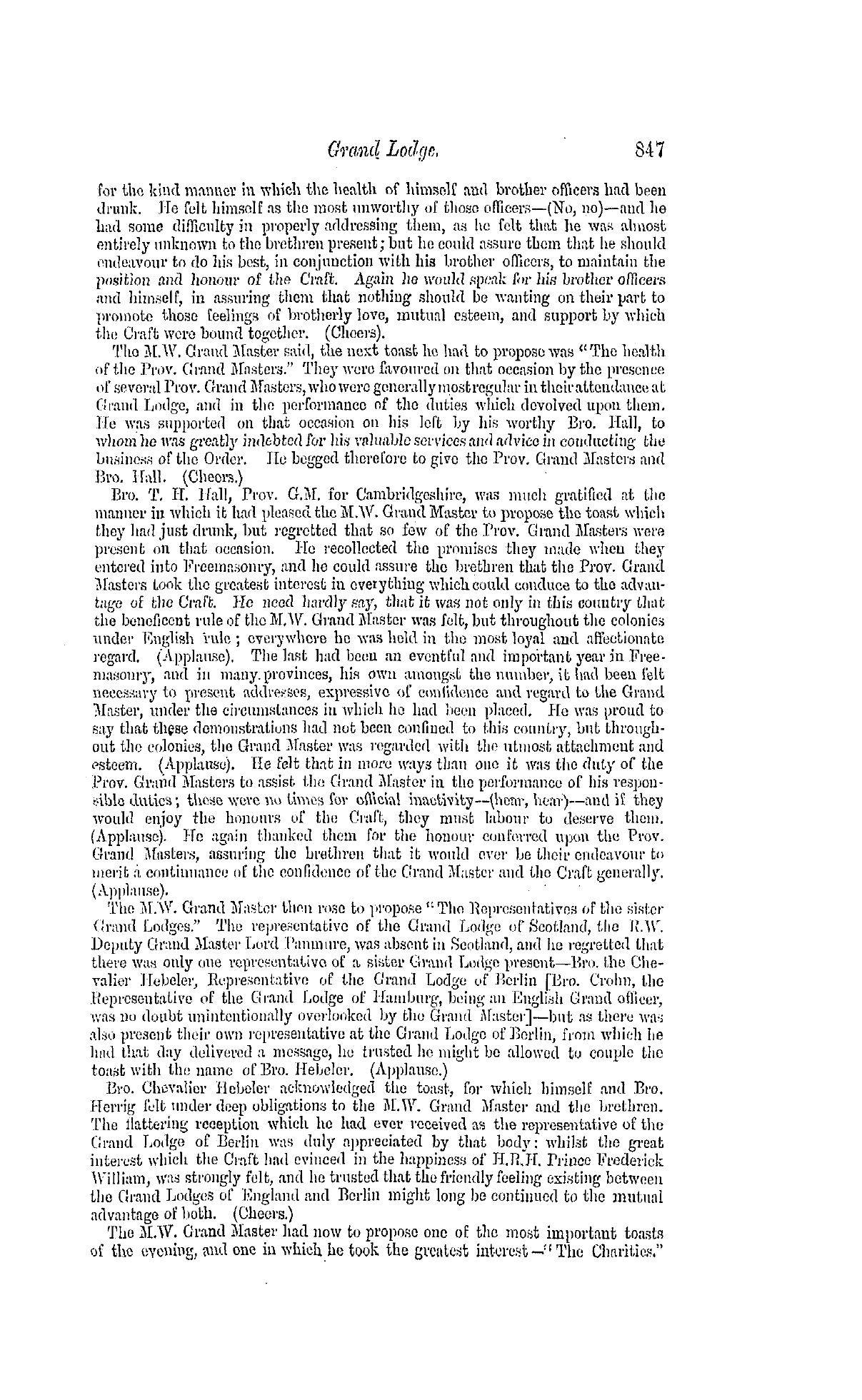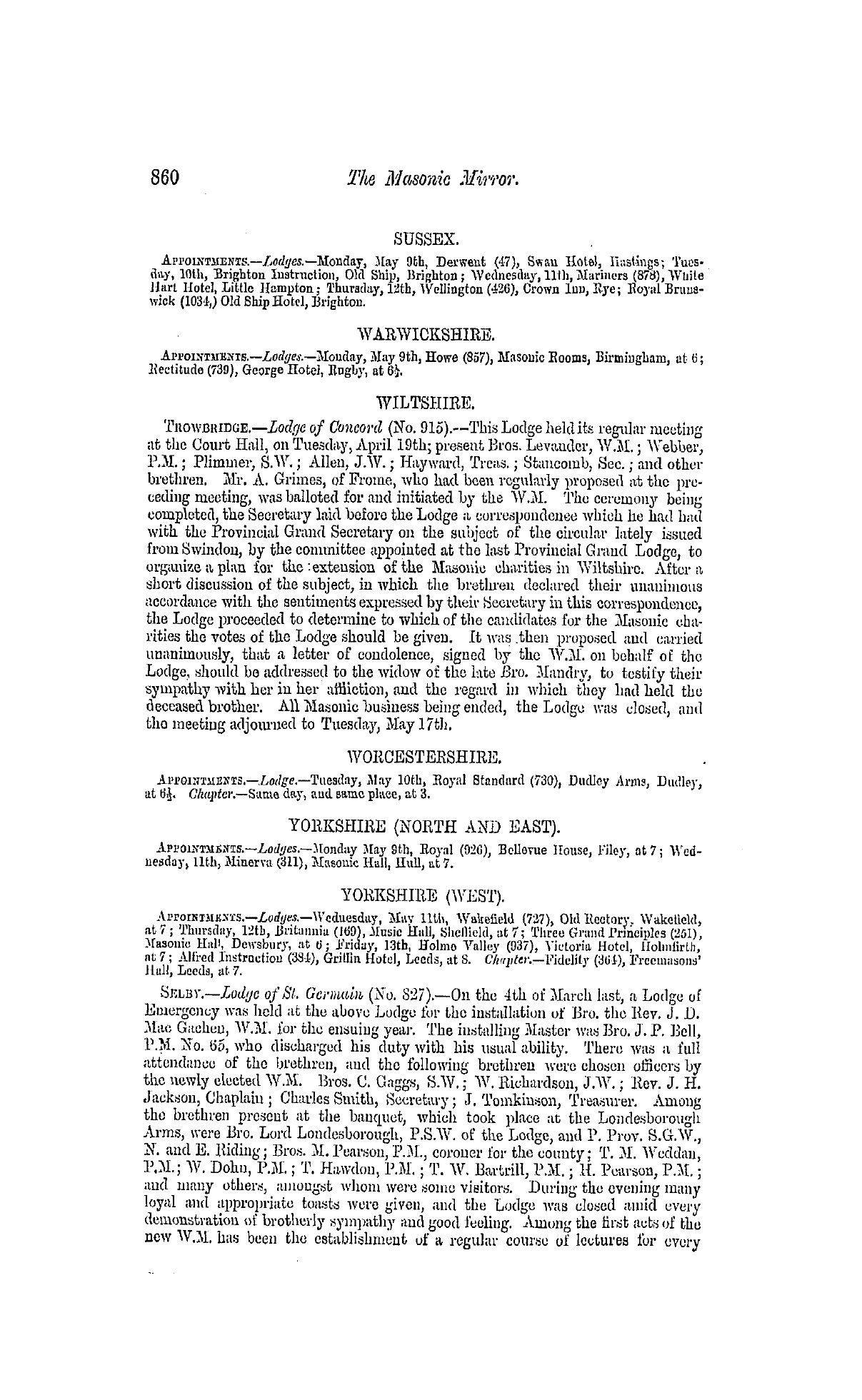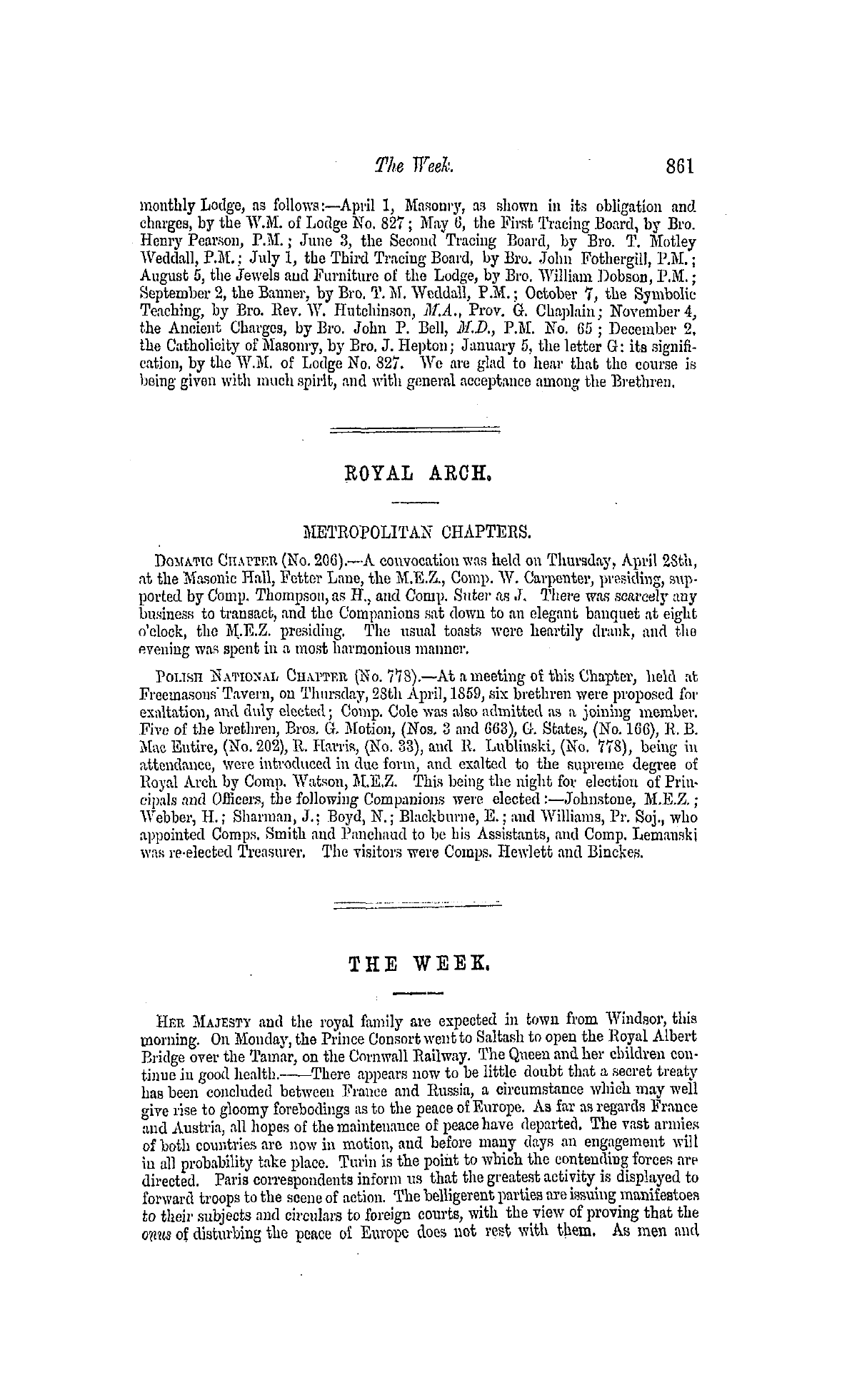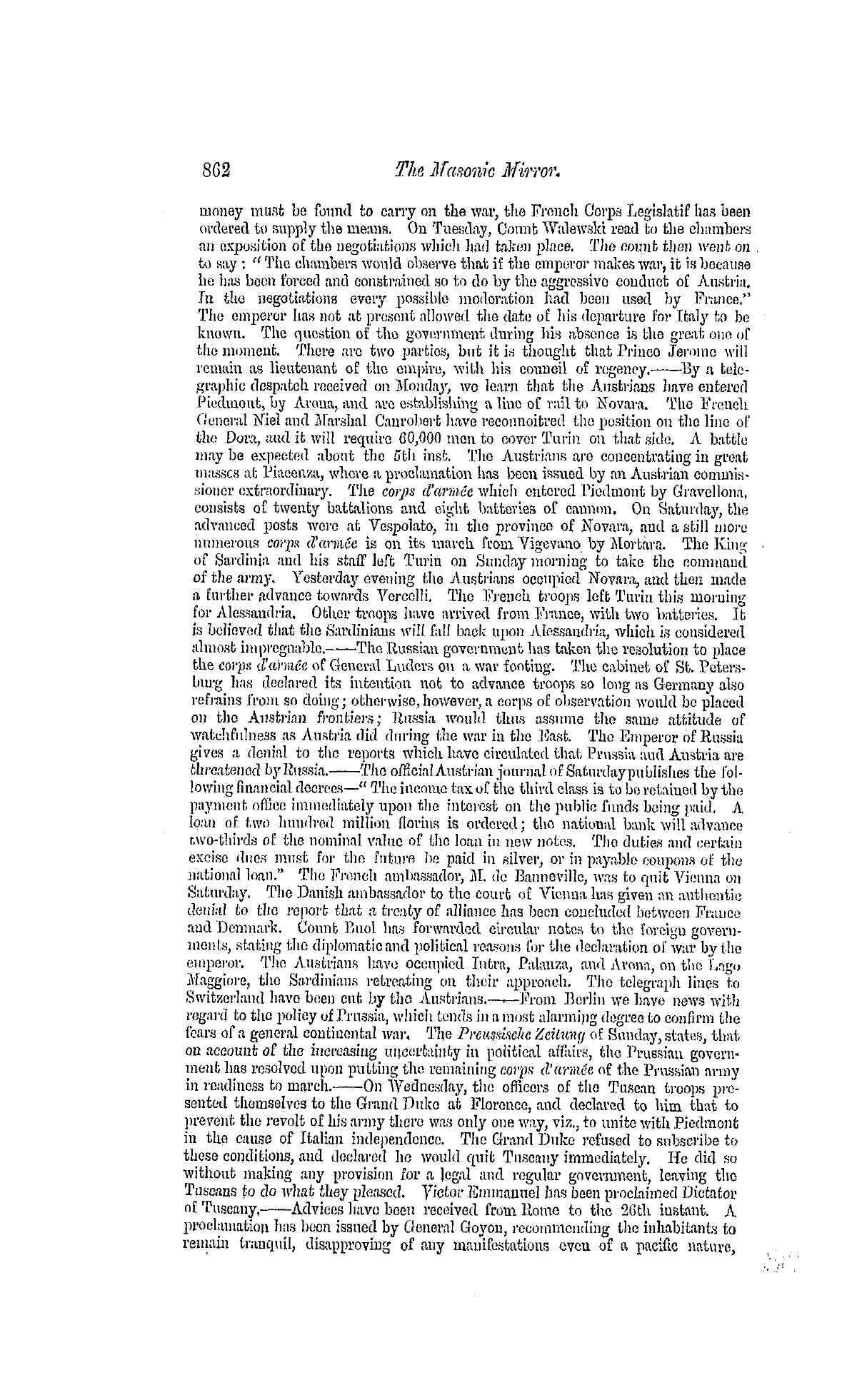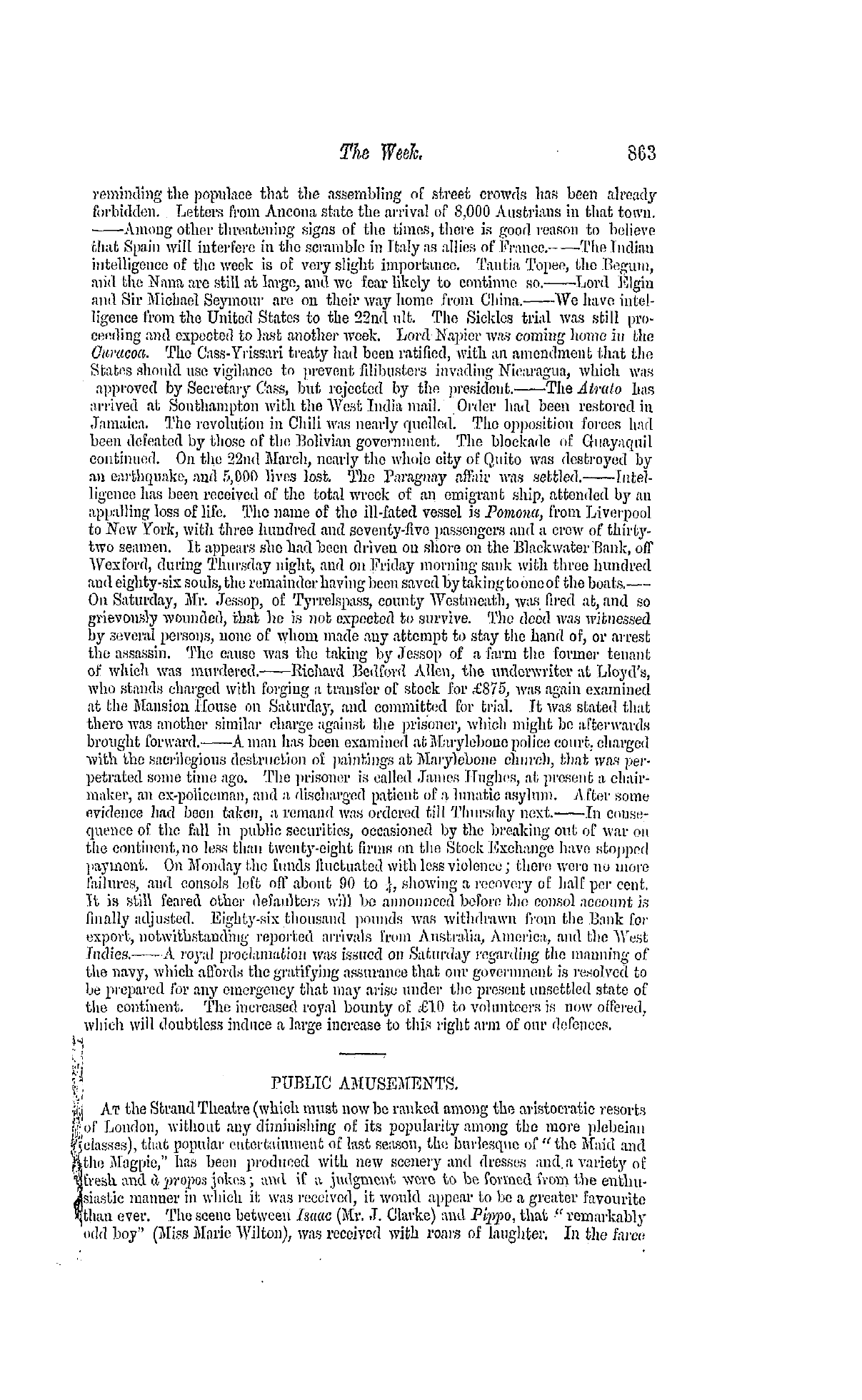-
Articles/Ads
Article THE MIDDLESEX ARCHÆOLOGICAL SOCIETY. ← Page 4 of 5 →
Note: This text has been automatically extracted via Optical Character Recognition (OCR) software.
The Middlesex Archæological Society.
to each other , in a neighbourly , honest way , for two or three generations . Extensive warehouses have been reared along part of the north side of London-wall , and we are told that considerable quantities of this ancient fortification have been removed , and spread upon the new roads in Islington ; and so the warlike fragments of the London of the past are used for
the more peaceful purpose of extending the metropolis into parts where a few years ago houses and streets were little thought of . On proceeding more into the centre of the thick pile of houses referred to , the artistic visitor will lie pleased by the picturesque appearance of the streets , or rather alleys , some of which , although they have no carriage thoroughfare , are places of great traffic . Little Bell-alley and Bell-alley , although only a few feet in widthmay bo considered the Regent-street and
, Oxford-street of this locality . To the first of these Bloomfield , the poet , was brought from the pleasant country when a little boy , by his mother , and placed in the care of his uncle , a shoemaker , who occupied the upper part of the house , No . 11 , Little Bell-alley . In the upper front room of this city house the youthful genius , under the most ungenial circumstances , saw , in his mind ' s eye , those simple pictures of the country of which he haswith so much freshnessgiven word-paintings to the world .
, , Leading from London-wall , which is the city boundary in this part , is "Wilson-street , composed of rather old-fashioned houses and shops . At a short distance from the London wall , on the east side of this street , is Horse-alley , which , with the parts adjoining , presents a curious specimen of old London . The roads are narrow , and many of the houses were built before the time of the fire . In this fane there is a stately mansion , with a portico , reached by a flight of steps from what has once been the
courtyard . Lhc house is lofty and of substantial brickwork . The staircase is wide , with ornamental balustrades . The doors are of polished mahogany ; the mantelpieces are enriched with carved ornaments ; and the ceilings decorated with heraldic and other devices in plaster . In the courtyard in front some small houses of two rooms each have been lately built , which , together with the large building , are let to a decent class of working people , hi the basement of the large house , washhouses , fitted
properly with coppers and tubs , have been provided , and care has evidently been taken to promote the comfort of the tenants . This quarter , like most of the debatable parts of the metropolis , seems to have been much neglected . We arc told that until lately , in spite of repeated complaints , the water supply was altogether insufficient . "While in this neighbourhood it is worth while to look at the old inns , which not many years ago were so famous , so lively with numerous guests ,
on trade or pleasure intent . The ' •'• Swan with two Necks , " as the modern lettcrer has written it , once so prim and smartly painted when cooks , waiters , boots , and chambermaids knew little rest , is now a dismantled and dilapidated wreck , that seems to be used only as a temporary booking-office for the railway carriers . Some of the other inns have dwindled down to mean " taps , " or been appropriated to other purposes . The Bull and Mouth , the Holly Bushand some of the inns in Bishopsgate-strcet and elsewhere
, , keep up their dignity ; but it seems likely that the demand for space for offices and warehouses in the district round the Bank and Exchange , will cause the removal to a distance of the hostelrics of former years , and the establishment of restaurants , where the citizens may obtain that hasty refreshment for which only time can be spared during business hours in these days of the railway and electric telegraph . Indeed , it is stated that the Loudon Tavern , the scene of so many civic and charitable festivities , will ,
Note: This text has been automatically extracted via Optical Character Recognition (OCR) software.
The Middlesex Archæological Society.
to each other , in a neighbourly , honest way , for two or three generations . Extensive warehouses have been reared along part of the north side of London-wall , and we are told that considerable quantities of this ancient fortification have been removed , and spread upon the new roads in Islington ; and so the warlike fragments of the London of the past are used for
the more peaceful purpose of extending the metropolis into parts where a few years ago houses and streets were little thought of . On proceeding more into the centre of the thick pile of houses referred to , the artistic visitor will lie pleased by the picturesque appearance of the streets , or rather alleys , some of which , although they have no carriage thoroughfare , are places of great traffic . Little Bell-alley and Bell-alley , although only a few feet in widthmay bo considered the Regent-street and
, Oxford-street of this locality . To the first of these Bloomfield , the poet , was brought from the pleasant country when a little boy , by his mother , and placed in the care of his uncle , a shoemaker , who occupied the upper part of the house , No . 11 , Little Bell-alley . In the upper front room of this city house the youthful genius , under the most ungenial circumstances , saw , in his mind ' s eye , those simple pictures of the country of which he haswith so much freshnessgiven word-paintings to the world .
, , Leading from London-wall , which is the city boundary in this part , is "Wilson-street , composed of rather old-fashioned houses and shops . At a short distance from the London wall , on the east side of this street , is Horse-alley , which , with the parts adjoining , presents a curious specimen of old London . The roads are narrow , and many of the houses were built before the time of the fire . In this fane there is a stately mansion , with a portico , reached by a flight of steps from what has once been the
courtyard . Lhc house is lofty and of substantial brickwork . The staircase is wide , with ornamental balustrades . The doors are of polished mahogany ; the mantelpieces are enriched with carved ornaments ; and the ceilings decorated with heraldic and other devices in plaster . In the courtyard in front some small houses of two rooms each have been lately built , which , together with the large building , are let to a decent class of working people , hi the basement of the large house , washhouses , fitted
properly with coppers and tubs , have been provided , and care has evidently been taken to promote the comfort of the tenants . This quarter , like most of the debatable parts of the metropolis , seems to have been much neglected . We arc told that until lately , in spite of repeated complaints , the water supply was altogether insufficient . "While in this neighbourhood it is worth while to look at the old inns , which not many years ago were so famous , so lively with numerous guests ,
on trade or pleasure intent . The ' •'• Swan with two Necks , " as the modern lettcrer has written it , once so prim and smartly painted when cooks , waiters , boots , and chambermaids knew little rest , is now a dismantled and dilapidated wreck , that seems to be used only as a temporary booking-office for the railway carriers . Some of the other inns have dwindled down to mean " taps , " or been appropriated to other purposes . The Bull and Mouth , the Holly Bushand some of the inns in Bishopsgate-strcet and elsewhere
, , keep up their dignity ; but it seems likely that the demand for space for offices and warehouses in the district round the Bank and Exchange , will cause the removal to a distance of the hostelrics of former years , and the establishment of restaurants , where the citizens may obtain that hasty refreshment for which only time can be spared during business hours in these days of the railway and electric telegraph . Indeed , it is stated that the Loudon Tavern , the scene of so many civic and charitable festivities , will ,






















